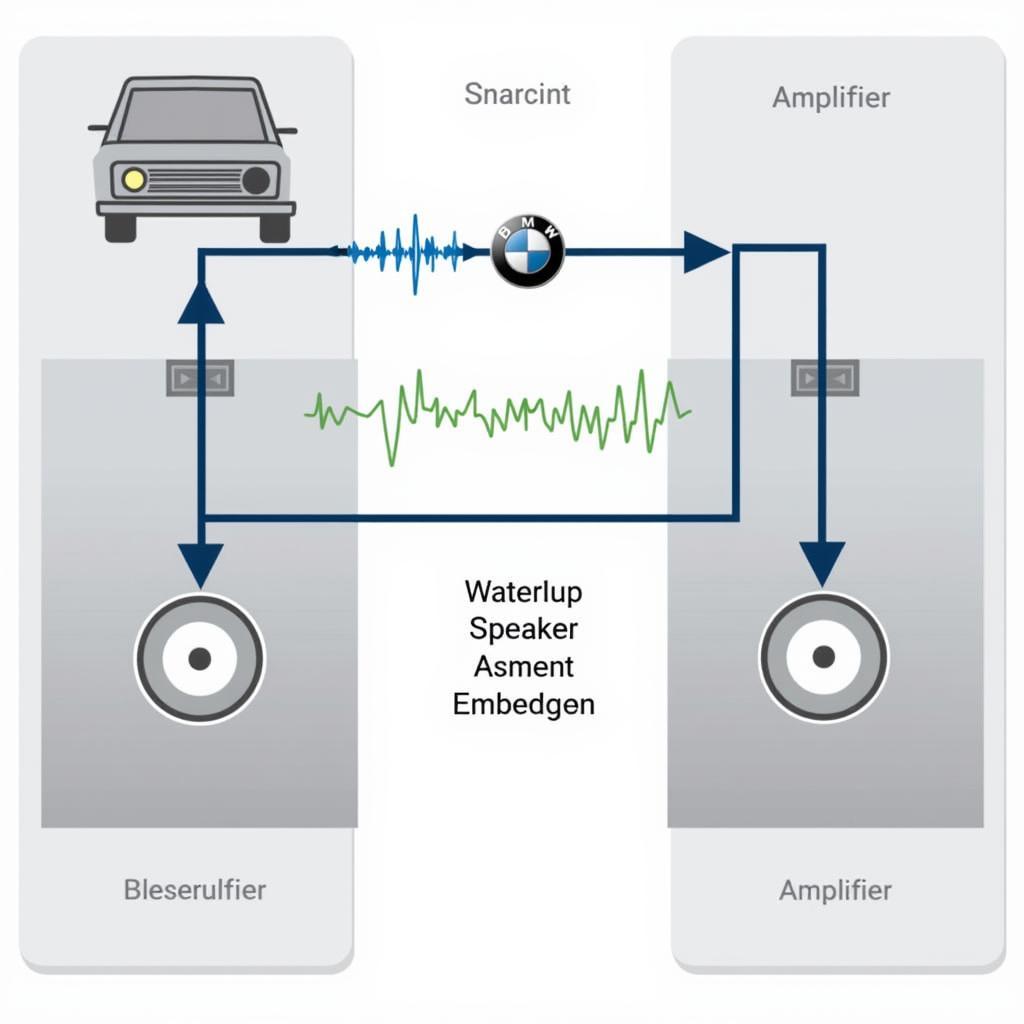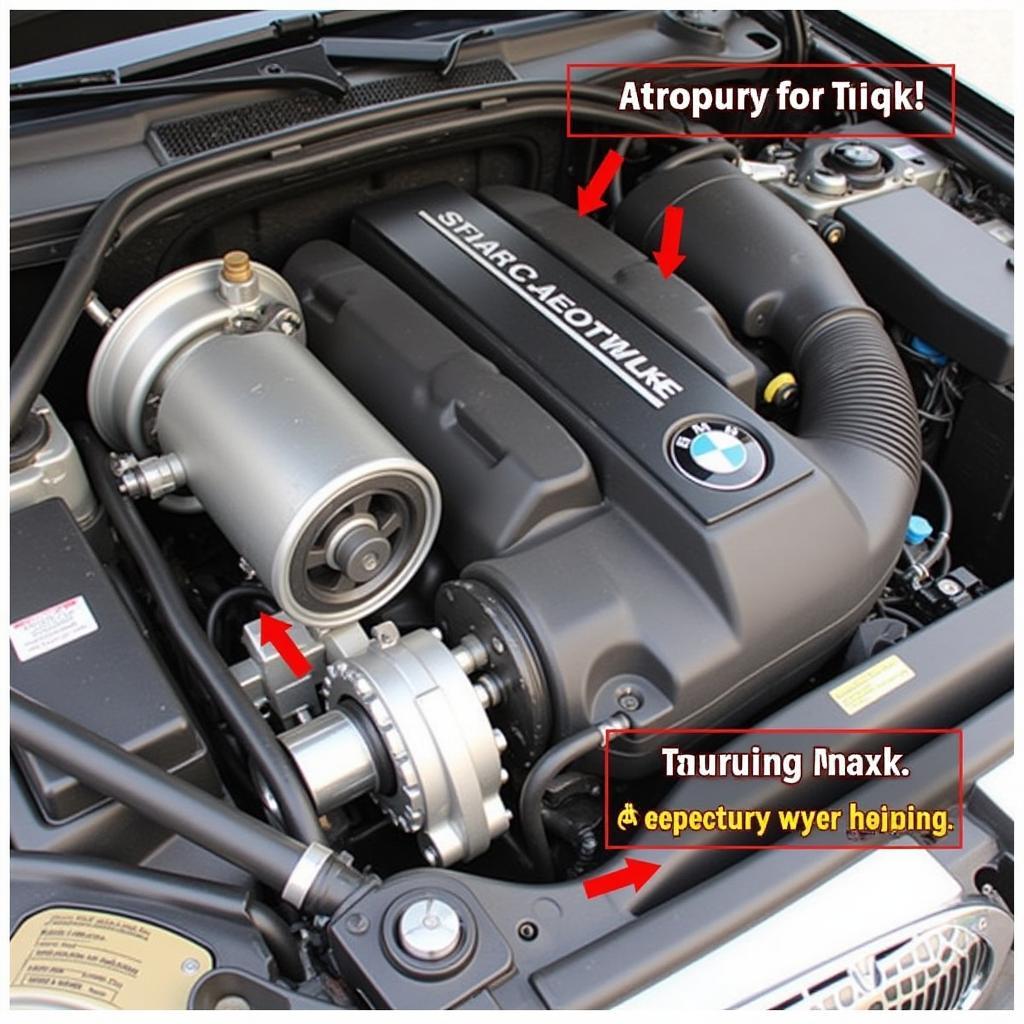BMW audio watermarking. It’s a topic that often leaves BMW owners and even some technicians scratching their heads. What is it? Why is it there? And what happens when something goes wrong? This article delves into the intricacies of BMW’s audio watermarking system, providing you with a comprehensive understanding of its purpose, functionality, and potential troubleshooting solutions.
Understanding the Purpose of BMW Audio Watermark
BMW employs audio watermarking as a sophisticated anti-piracy measure, primarily for its premium sound systems like Harman Kardon and Bang & Olufsen. This technology embeds an inaudible signal within the audio output, acting as a digital fingerprint that identifies the specific audio system it originated from. This helps protect BMW’s intellectual property by preventing unauthorized copying and distribution of its premium audio content. This watermark doesn’t affect the listening experience for the driver or passengers, remaining undetectable to the human ear.
 BMW Audio Watermark System Diagram
BMW Audio Watermark System Diagram
While primarily an anti-piracy measure, the watermark also plays a role in diagnostics. Specialized equipment at authorized BMW service centers can detect and decode this watermark, assisting technicians in identifying faulty components within the audio system. This helps pinpoint issues and streamline the repair process.
How Does BMW Audio Watermark Work?
The watermark is embedded during the audio processing stage within the head unit. It’s a complex process involving sophisticated algorithms that seamlessly integrate the watermark into the audio signal without compromising audio quality. Think of it like a hidden signature within the music itself.
Troubleshooting BMW Audio Watermark Issues
Occasionally, problems can arise with the audio watermark system, often manifesting as distorted audio or complete audio loss. Several factors can contribute to these issues, including:
- Software glitches: Corruptions within the head unit’s software can interfere with the watermarking process, leading to audio playback problems.
- Hardware malfunctions: A failing amplifier, faulty speakers, or damaged wiring can disrupt the audio signal and affect the watermark.
- Aftermarket modifications: Installing non-approved aftermarket audio components can sometimes interfere with the watermarking system, particularly if they are not compatible with BMW’s proprietary technology.
Common Symptoms of BMW Audio Watermark Problems
- Intermittent audio dropouts: The audio might cut out randomly, returning after a few seconds or minutes.
- Distorted sound: The audio may sound muffled, static-y, or generally unpleasant.
- Complete audio loss: No sound comes out of the speakers, even though the head unit appears to be functioning normally.
Solving BMW Audio Watermark Problems
Addressing these problems often involves a systematic approach:
- Software updates: Updating the head unit’s software to the latest version can often resolve software-related glitches.
- Hardware checks: Inspecting the amplifier, speakers, and wiring for any signs of damage or malfunction is crucial. Replacing faulty components is usually necessary.
- Professional diagnosis: If the issue persists, consulting a qualified BMW technician with access to specialized diagnostic equipment is highly recommended. They can decode the watermark and pinpoint the source of the problem accurately.
Expert Insight: “BMW’s audio watermarking is a double-edged sword. While it effectively protects their premium audio, it can also introduce complexities for owners experiencing audio issues. Accurate diagnosis requires specialized equipment, making it crucial to seek professional assistance when troubleshooting.” – Dr. Andreas Bauer, Automotive Electronics Engineer
Expert Insight: “Often, a simple software update is all that’s needed to resolve audio watermarking issues. However, don’t underestimate the importance of checking the physical components, as hardware malfunctions can mimic software problems.” – Inga Müller, Senior BMW Technician
Conclusion
BMW audio watermark, while invisible to the ear, plays a significant role in protecting the integrity of BMW’s premium audio systems. Understanding its function and potential problems empowers you to address audio issues effectively. While some troubleshooting steps can be taken independently, professional assistance is often necessary for accurate diagnosis and repair, ensuring your BMW’s audio system performs flawlessly. Remember, addressing audio problems promptly not only restores your listening pleasure but also prevents further complications down the road.
FAQ
- Does the audio watermark affect sound quality? No, the watermark is inaudible and does not impact the listening experience.
- Can I remove the audio watermark? No, removing the watermark is not possible without significantly altering the audio system.
- Why is my BMW audio distorted? Distorted audio can be caused by several factors, including problems with the watermark system, faulty hardware, or software glitches.
- How can I update my BMW head unit software? Software updates can often be performed through the head unit’s settings menu or by visiting a BMW service center.
- What should I do if I experience complete audio loss? If you experience complete audio loss, consult a qualified BMW technician for diagnosis and repair.
- Can aftermarket audio components cause watermarking issues? Yes, installing incompatible aftermarket components can sometimes interfere with the watermarking system.
- How much does it cost to fix BMW audio watermark issues? The cost of repair depends on the specific problem and the labor rates of your chosen service center.
For assistance with BMW audio watermark issues or any other car diagnostic needs, please contact us via Whatsapp: +1 (641) 206-8880, Email: [email protected] or visit us at 276 Reock St, City of Orange, NJ 07050, United States. Our 24/7 customer support team is ready to help.



